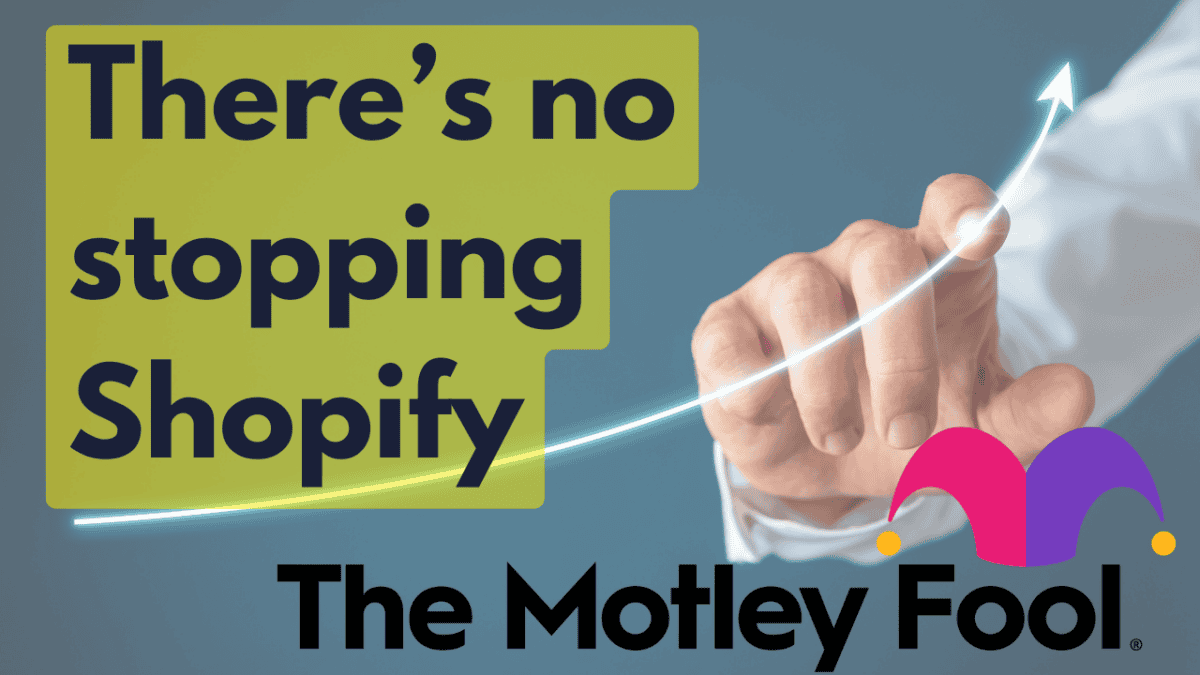Shopify stock exploded this week after the company announced Q3 earnings. In this five-minute video, Motley Fool analysts Iain Butler and Nick Sciple discuss the long runway ahead for this beloved Canadian growth stock.
Prefer to read? There’s a transcript below.
Transcript
Nick Sciple: I’m Motley Fool Canada senior analyst Nick Sciple, and this is “The Five-Minute Major,” here to make you a smarter investor in about five minutes. Today we’re discussing Shopify‘s (TSX:SHOP) blowout third-quarter 2024 earnings release.
My guest today is Motley Fool Canada Chief Investment Officer Iain Butler. Iain, thanks for joining me.
Iain Butler: Great to be here, Nick, and great to be back doing these Five-Minutes Majors.
Nick Sciple: Yeah. Excited to be here with you, Iain. Shopify is dominating the news this week in Canadian investing land. The stock is up more than 25% this week after better-than-expected results and a positive outlook for the upcoming holiday shopping season. Iain, what stood out to you from the earnings release?
Key takeaways from Shopify’s Q3 earnings
Iain Butler: A few things. What stood out right up front was the brevity of the earnings release. Frankly, they used to have quite a detailed press release hit the wire, and this one was pretty short — a page and a half. So maybe that’s a change of philosophy, whatever. But the message that they conveyed was that this business is absolutely on fire. It’s been on fire since we started covering the company just over eight years ago.
It’s just been a consistent quarter after quarter, year over year, growth rates north of 20% time in and time out. What has changed, though, is that now this company is more consistently profitable.
Profit margin has ramped very nicely. In the earlier years, we would see negative profit margins. This thing is profitable, it is free cash flow generative. There’s a real business here. So it’s not just a glamorous growth story. There is a real business behind Shopify, I think.
Going down to the business level, reading through the conference call — just more of the tone. Just because we have followed this company for so long. It’s become a business operating system a lot like Microsoft Windows. It is the go-to source. If you’re starting a business, or if you’re an existing business and want to up your game, you go to Shopify, and they provide all these tools that just allow the business to run far more smoothly than any other platform out there.
Shift in Shopify’s clients
Nick Sciple: Iain, throughout much of its history, Shopify branded itself as focusing on small merchants arming the rebels against large competitors like Amazon and e-commerce. Today, though, Shopify is increasingly attracting large sellers to the platform. I wouldn’t say it’s arming the rebels as much as it is an arms dealer to anybody who wants their services. How has the company really evolved since you started covering the business? And where do you think the company is going to go from here?
How Shopify has evolved over the years
Iain Butler: Yeah, I went back to some of the early coverage that we did provide on Shopify. And just to get a flavour for the change that’s occurred: Back then, they had 243,000 merchants on the platform. Today, that’s over 2 million. It was not a household name back then by any stretch.
I don’t know that that’s changed. I don’t know that if you walk up to somebody on the street and say “Shopify,” they immediately know. So maybe that’s changed. Maybe it hasn’t. I think it’s moved in the right, or moved to more of a household name, but not so much because they do still work in the background.
As indicated, earlier, Shopify was not profitable. But this most recent quarter, they reported 19% free cash flow margin. And just another fun little stat: Back then, they had 1,000 employees. Today they are over 8,000 employees, and I think they’ve gone from focusing on small merchants to all merchants, and they’ve even gone beyond online. They have an offline business. Now they are going business-to-business, not just business-to-customer, and they’ve really expanded an international business, too. So the company has just exploded. It continues to sort of grow new tentacles, expanding on what it’s got in its core and growing beyond that. So it’s it’s a fun company to read about every quarter, as opposed to a lot of the companies that we come across where there’s a lot of “yeah, this is good, but …” Everything just continues to roll very nicely for Shopify.
Shopify’s future prospects
Nick Sciple: It’s really a wonderful Canadian business growth story, a company that continues to show optionality many years after its founding. And you know the founder continues to knock on new doors, open new markets for the business. I think the growth for Shopify is not likely to slow down anytime soon. Still, lots of merchants to bring on to the platform, and again, lots of other areas of commerce that they’re not as deeply penetrated in as they have historically been in e-commerce, that the company has lots of opportunity to go after.
Iain Butler: It was founded in 2004, I believe. So we’re 20 years into the story. And yeah, I don’t know that there’s any indication that it’s running out of runway. There’s plenty more to go for Shopify.
Nick Sciple: Yeah, we’ve been following this company for years. Hope to continue following it for decades to come. Iain, thank you so much for joining me for this edition of the Five-Minute Major, and we’ll see everybody next time.








